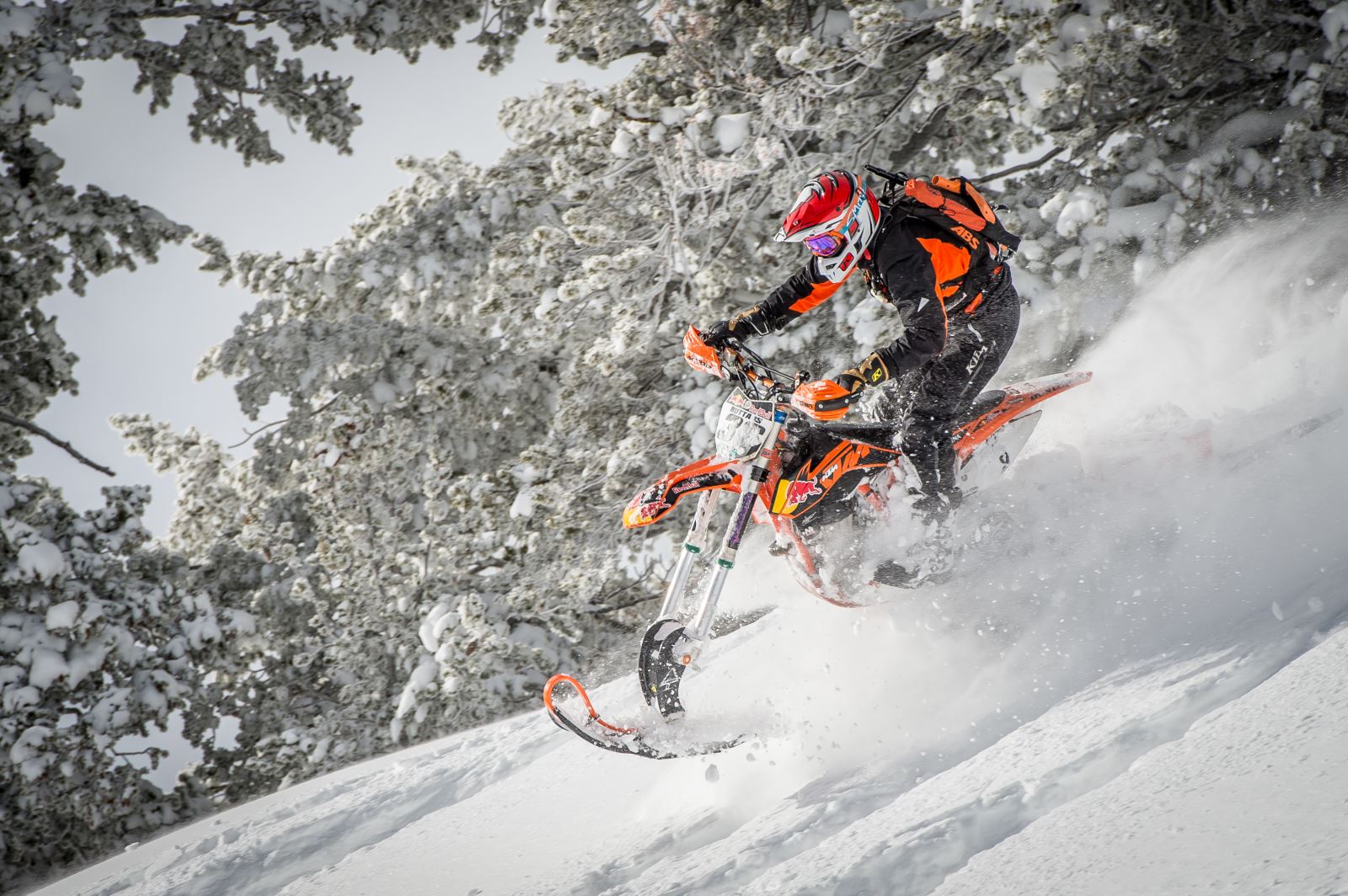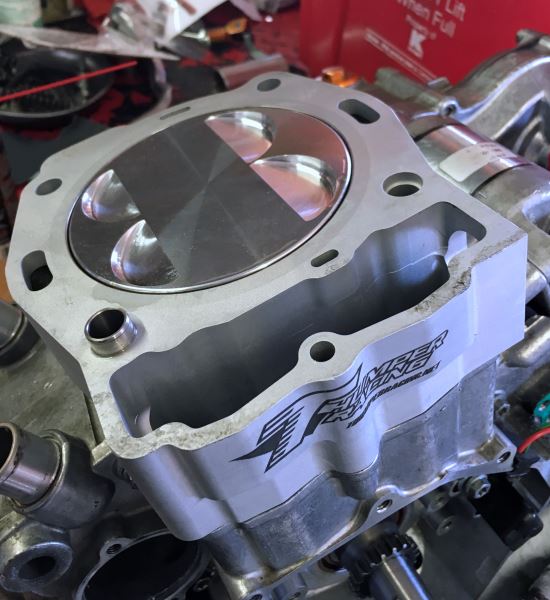By Brock Buttars, Snowbike World test rider.

A wise man once said to me, “Son, not all horses are race horses.” I'm pretty sure he told me that after finding weeds and dirt hanging out of the front bumper of my mom's Buick Regal.
With that being said, I've always had a the desire to push anything with a motor to its limits.
Just like a majority of newbie snowbikers, I crossed over from big-mountain backcountry snowmobiling. It's not uncommon to have two or three turbocharged sleds in a group. I personally came off an intercooled Boondocker-equipped HCR 800 that made over 200 horsepower. So, the first time I left the truck on a 55-horsepower KTM 500 XC-W, I had my doubts. A few minutes up the trail in 6th gear I realized that I matter how good of a rider I was, this "horse" was not exactly made for racing snowmobiles to the warming hut.
As the season progressed I found myself getting off the trail as soon as possible and ripping through trees on my way to the steepest tree lines and nastiest drainages where my 200 hp snowmobile would have been tips up (for the record, I haven't had to use a shovel to dig out for the last two seasons).
Now the dilemma: These steep tree lines are steep! The snow here in northern Utah is dry and deep for at least the first two months of the season. Gaining elevation straight up the mountain on a 50-hp machine just isn't the same as it was on the turbo sled. I would be a liar if I said that I didn't miss the sound of the TIAL wastegate. I learned pretty quick that my mountain horse needed more ponies.
Looking for that big power feeling
I started to do a little homework online and found out the "big boys" were running 520- and 600-cc big bore kits. And a few were adding turbos and NOS kits on top of it.
I got to spend some time hanging out and riding with Reagan Sieg this past season, and if there is one person that knows a thing or two about snowbikes, Reagan is the man.
As most of you reading this have probably seen on videos or through social media, Reagan Sieg goes big… really big. Some of the gnarliest photos I've ever seen on snow are of him hucking his Timbersled off the top of huge Revelstoke mountains. I've even tried a few bigger jumps myself, and learned pretty quick that you have to have a lot of speed to get good distance in soft snow.
Turbo… nitrous?
I've learned over the years, that you just need to look at what the pros ride for personal equipment and that will be a pretty good indicator of what is the best.
Because the snowbike allows you to skirt through trees that are 35-inches wide, it's hard for me not to spend the majority of the ride ducking under branches. According to Sieg and Polaris hillclimb champion Keith Curtis, the turbocharged snowbike has its place. That place is exactly where you would want a turbo on a sled. Big, open meadows, long wide-open climbs and deep powder.
The problem isn't with the turbo it's self, but rather the design and gear ratios in the motorcycle transmission. When you are in second or third gear and the turbo spools up it is an amazing experience.The problem is that experience is very short lived. Without a torque-sensing centrifugal clutch setup, when you pull in the clutch and shift, you loose the boost.
Again, I'm not saying that a turbo setup isn't right for you (not all horses are race horses).
Another option that I was skeptical about was the IceAge nitrous oxide system that we put on a 2016 KTM 450 SX-F project bike. With the 20-horsepower jet installed, the bike was a completely different animal. Like I stated earlier, most of the time a 450 or even the 350 has plenty of power to have an amazing experience on a snowbike.
The power loss at elevation really takes a toll on a 450cc motocross bike designed to run at sea level. There is a 3- to 4.5-percent loss in power per 1,000 feet above sea level. If I'm riding a KTM 450 SX-F that makes 62 horsepower at sea level, it is going to make only 39 horsepower where I ride. It is still pretty amazing how quick and agile you can get around the mountains with such little horsepower.
Big Bore
After a little more research and homework on the Internet, I found that Thumper Racing (http://thumperracing.net/index.php?route=common/home) makes a 520cc big bore kit for the KTM 450 SX-F that was attached to my Timbersled SX 173. I called and spoke with Travis and explained my situation. A few days later I found myself in the garage with a torque wrench and a new CP forged piston to install.

The first time out on the snow and I knew that I had made a good decision. The 520 was able to pull an extra gear on the same hill against the 450s. Another advantage of the 520 kit is that the massive torque gain let's you cruise through the snow at 5,000 or 6,000 rpm, where a 450 or smaller bike has to be near the rev limiter. The 350 XC-F project bike we built last season with a Timbersled ST 120 kit would run through snow just fine––as long as it was pinned everywhere it went.
I felt like my bike had a built diesel motor when it would just tractor up and out of canyons that I thought could never be conquered.
I was very impressed and can tell you that the big bore is a good choice if you are looking for a good strong motor that will still rev out on the top end.
As this new segment continues to evolve, we are seeing a revival to the days when you had to build and modify your snowmobile out of necessity. It's sort of like stepping back in time… but it's the future.
Now all you need to do is figure out whether you want to ride a clydesdale, a thoroughbred or a shetland pony. I’ll take a race horse.